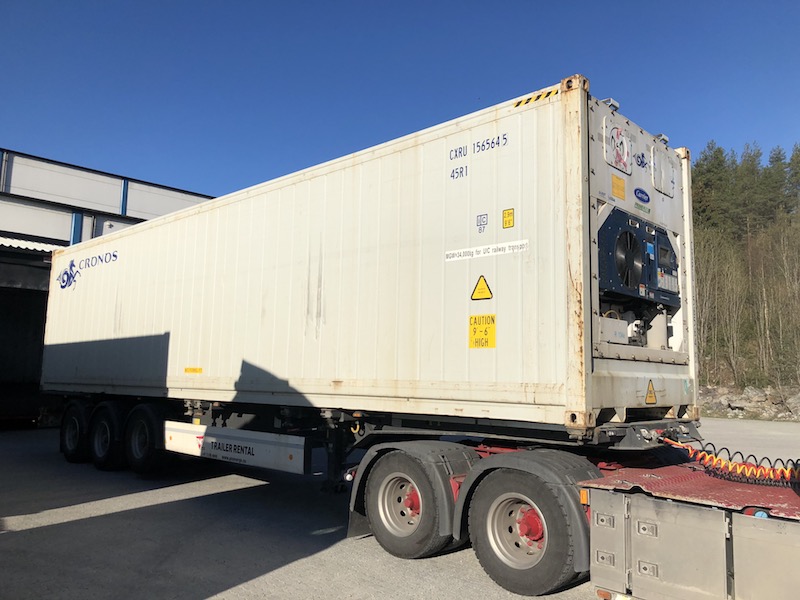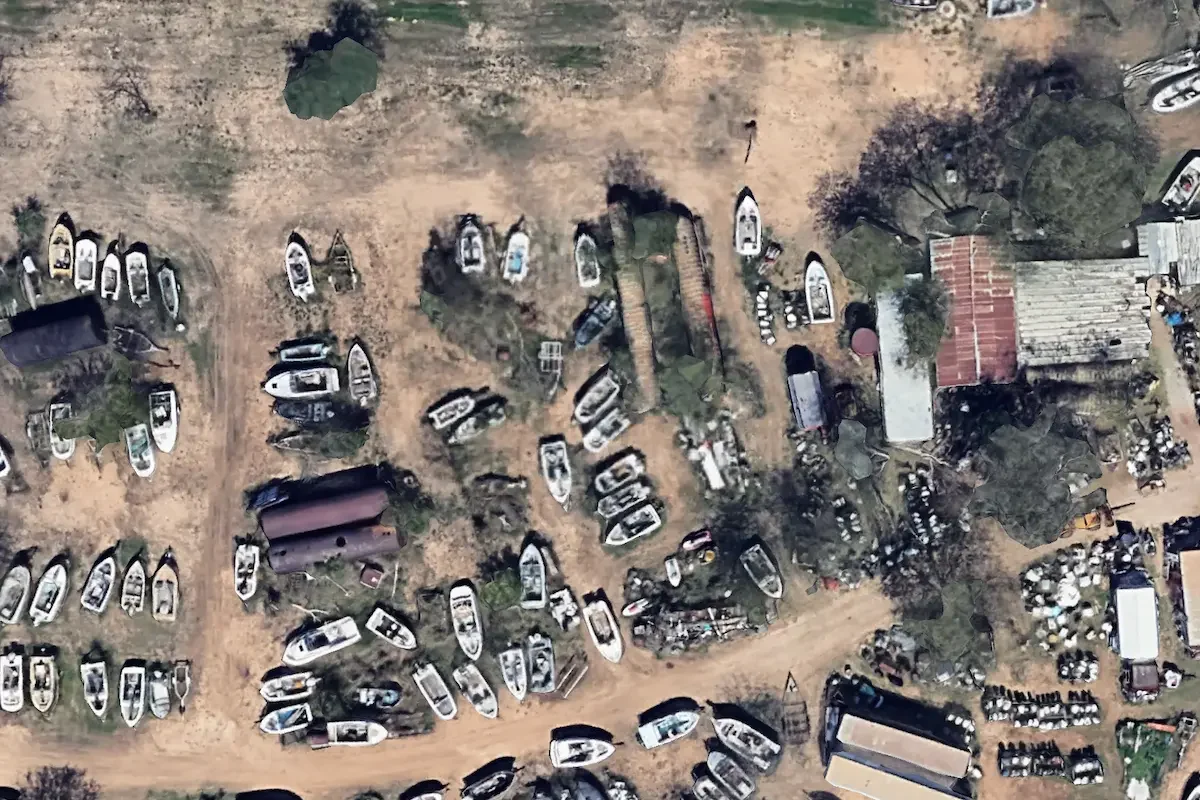The shipping industry plays a crucial role in transporting goods from production points to consumers. Some products are perishable and should be preserved before they reach the consumer market. Such products include fruits, vegetables, and animal products.
A reefer container or refrigerated container is a container used in shipping to transport perishable goods. The temperatures in a reefer are controlled to keep the cargo frozen or refrigerated. Reefer containers have inbuilt refrigeration units connected to a current supply within the ship or terminal. Some reefer containers are used in road transport after goods leave the port.
There are different types of refrigerated containers, and they come in different sizes. This post outlines the types and features of a reefer container.

Types of Reefer Containers
Reefer containers are classified according to size, place of transport, and mode of operation. Here are common types.
Closed Reefer
Most ships use closed refrigerated containers. The container has an inbuilt power supply with a front wall separating its cargo from the rest of the ship. It is the most efficient refrigeration unit with an automatic heating and cooling system and is simple to operate.
Insulated Reefer
This type of reefer has an insulation unit that maintains low temperatures. The unit works under an air replacement mechanism. Air used up by the cargo is constantly replaced by incoming fresh air, which ensures minimal variation in temperature.
Fresh Air Management Containers
This is an advanced model of the insulated reefer. It works under the same mechanism as the insulated reefer, but its air regulation functionalities are advanced. Its advanced features allow it to keep goods fresh for longer, up to 30 days.
Refrigerated Tanks
Liquid cargo like milk and drugs which are temperature sensitive are transported in tanks. The tanks are cooled externally by a concentrated solution of sodium chloride.
Cryogenic Reefer Container
Cryogenic reefer containers work on the principle of ‘loss cooling.’ The container is cooled by solid carbon dioxide or liquid nitrogen. Solid carbon dioxide sublimes at high temperatures ensuring goods remain dry. Liquid nitrogen is an inert substance, it prevents the action of bacteria on stored goods.
This reefer is ideal for perishables that are water sensitive. It can keep goods fresh for up to five weeks.
Double Refrigeration Reefer Containers
Valuable goods that are highly perishable like pharmaceuticals may cause huge losses if they go bad. Double refrigeration containers are used to transport them.
One of these refrigerators is a backup. When the one with goods fails, the other keeps the goods fresh.
Twenty and Forty ft Refrigeration Containers
These refrigeration containers have nearly the same dimensions, but the length differs.
The twenty-foot reefer is 20 ft long, while the 40ft reefer is 40 ft long. They have the same height and width. The exact dimensions are later in the article, so if you need dimensions just jump to the next chapter “Reefer Container Size”
Other Categories of Reefer Containers
Refrigeration containers are also classified according to use.
Offshore Reefer Containers
After goods are offloaded from a ship, they should be transported to their final destination. The containers used to transport goods from the port to other destinations are called offshore containers.
The functionality of offshore containers is similar to the major types depending on the nature of the goods.
High Cube Reefer Containers
High cube reefer containers have a high capacity and are commonly used to transport fruits and vegetables on land. The temperatures in these containers are moderate since the cargo transported can withstand mild temperature changes.
Care and Maintenance of Reefer Containers
Refrigeration containers require good care and maintenance for effective functioning. Here are some maintenance practices to observe.
- Always clean the container after offloading cargo to prevent contamination
- Ensure all reefer parts are functioning before loading goods to the shipment.
- Each container should be inspected by a technician for dysfunctional cases while on transport.
- Any faulty container should be repaired before use.
- The shipping company should train their crew on effective care and maintenance of reefer containers.
- Always have a backup source of current in cases the main one fails.
- Maintain high cleanliness when handling goods to avoid contamination.
- When loading reefer containers, allow for ventilation to prevent the build-up of warm air in the container.
- Ensure there is a technician among the Crew who can repair while on transport if the need arises.
Reefer Container Size (What is the Size of a Reefer Container?)
Reefer containers come in different sizes. The two standard sizes are Reefer 20’ and Reefer 40’.
Reefer 20’
The internal dimensions of this container are 5.5×2.3×2.2m, while the external dimensions are about 5.7×2.5×2.4m. It is fitted with a door 2.23×2.2m and carries a maximum cargo payload of 27000kg.
Reefer 40’
The internal dimensions of Reefer 40’ are 12×2.3×2.4m, while the external dimensions are 12.2×2.5×2.6m. It has a door measuring 2.2.3×2.23m. It carries about 27600kg of cargo depending on the size of the container.
Here is a table with the most popular types and their inner dimensions and door opening:
| ISO Size Type – refrigerated container type name | Inside Dimension (Length x Width x Height) | Door opening (Width x Height) |
|---|---|---|
| 22R1 – 20’ refrigerated container | 5,450 mm x 2,280 mm x 2,159 mm | 2,290 mm x 2,264 mm |
| 25R1 – 20’ High cube refrigerated container | 5,380 mm x 2,280 mm x 2,541 mm | 2,280 mm x 2,520 mm |
| 45R1 – 40’ High cube refrigerated container | 11,599 mm x 2,290 mm x 2,425 mm | 2,290 mm x 2,557 mm |
| LNR1 – 45’ refrigerated container | 13,716 mm x 2,550 mm x 2,896 mm | 2440 mm x 2,567 mm |
How Heavy is a Reefer Container?
The weight of a reefer container correlates with its size. The two primary dimensions, Reefer 20’ and Reefer 40’ weigh about 2000kg and 4500kg, respectively. For more detailed characteristics, always refer to valid CSC place.
Here is a table with the most popular types and their tara weights:
| ISO Size Type – refrigerated container type name | Tara or Net Weight (lbs/kgs) | Max. Gross Weight (lbs/kgs) |
|---|---|---|
| 22R1 – 20’ refrigerated container | 32,000 lbs / 2860 kg | 70,547 lbs / 32000 kg |
| 25R1 – 20’ High cube refrigerated container | 6570 lbs / 2980 kg | 67,196 lbs / 30480 kg |
| 45R1 – 40’ High cube refrigerated container | 9,744 lbs / 4420 kg | 74,956 lbs / 34000 kg |
| LNR1 – 45’ refregirated container | 13,426 lbs / 6090 kg | 74,956 lbs / 34000 kg |
The mass of the refrigerated container when loaded with cargo is the sum of the cargo weight and the container weight.
Suppose a Reefer 20’ container is full; its total weight is calculated.
Total weight= cargo weight + container weight
=4000kg+ 27000kg
=31000kg
The mass of a Reefer 40’ container full is:
5000kg + 27600kg
=32600kg
Reefer Container Temperature
Perishable goods are typically stored at temperatures below 4℃. At this temperature, microorganisms are inactive and won’t act on the perishables. There is a slight variation in temperatures of different Reefer containers.
The temperature regulation features of a container determine its temperature. Also, different types of cargo have additional temperature requirements to keep them free of microorganisms.
Most refrigerated containers are maintained at a temperature ranging from -25 to +25. Highly perishable goods are transported in reefer containers maintained at temperatures below +5°C.
Conclusion
Reefer containers are essential in ensuring people in different geographical areas access crucial goods. Since most of the cargo transported in refrigerated containers is sensitive, these refrigerating containers require maximum hygiene.
- Wind-Assisted Propulsion Systems (WAPS): A Game Changer for Maritime Decarbonization – February 6, 2025
- 10 Boat Salvage Yards in California – January 25, 2025
- 13 Boat Salvage Yards in Texas – January 18, 2025




